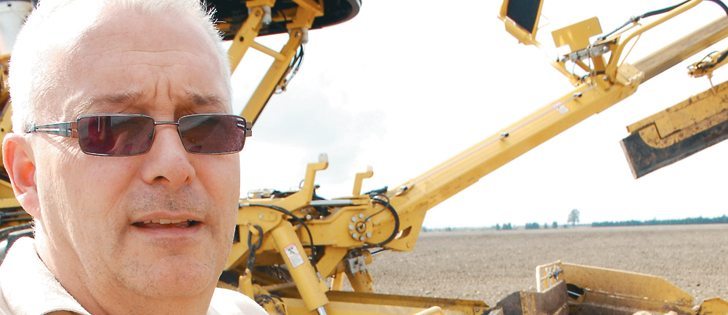The summer season is so short in the northern climate that it encourages intense engagement.
Getting out into the natural environment is restful and invigorating. Some people back pack with only a tent, some use a trailer or full RV and others invest in a permanent structure, often near if not right on a lake. Some just use their home’s patio.
However, whether it’s tenting, RV camping or hanging out at the pool, it’s possible to be environmentally and energy conscientious.
Read Also

Canadian Food Inspection Agency red tape changes a first step: agriculture
Farm groups say they’re happy to see action on Canada’s federal regulatory red tape, but there’s still a lot of streamlining left to be done
There are the obvious good vehicular practices for those driving to their favourite natural site: proper tire inflation, economical driving practices, ensuring that unused roof racks are removed to reduce drag, unloading unnecessary weight to reduce rolling resistance and, perhaps surprisingly, using air conditioning rather than open windows to reduce drag or vehicle air resistance.
It may seem obvious, but locating a tent or RV in the shade of a tree can dramatically reduce overheating and make the experience more comfortable and energy conserving.
Closing blinds or using awnings to shade windows that face the sun can also help keep things cooler.
Use open windows when possible for cross ventilation to reduce overheating and the need for energy-rich air conditioning.
Closing windows and pulling blinds during the day and opening them at night cools down the structure. The air conditioning doesn’t need to be turned to maximum if you aren’t in the RV.
Walk or bike to the local shower or canteen instead of driving. You and the environment will benefit, and it is a great example for the kids or grand-kids to get physical exercise. After all, you do go to the country for the quiet.
Using a microwave instead of the cooktop keeps things cooler and uses much less energy.
As well, compact fluorescent or LED lighting will reduce heating and use less energy.
Unplug appliances before you leave or use a power bar to turn them off. It’s not good enough to just turn the off switch because a lot of equipment has vampire loads, which are small constant electrical draws from clocks, TVs and chargers.
Unplug fridges and freezers when you aren’t living in the cabin. Remember that the old cast-off fridge from your main residence is as much an energy hog in its new location as it was in its old one.
Cabin weekend use is OK, but full-time running is costly. Out of sight does not count here.
New Energy Star rated refrigeration units are much more energy efficient than older units.
Alternative energy can be used on almost any scale and can be as small as back packers charging their electronics with a small solar panel.
A solar installation on an RV can help recharge the battery. The only limitation is the size of the budget and available roof space.
Be cautious about expectations. Many small panels sold at big box retailers are just trickle chargers, incapable of affecting a battery under use.
Solar panels can be permanently mounted on the roof with small standoffs or attached directly to the roof surface with a peel and stick system without roof penetration.
Solar systems that fit on an RV roof aren’t likely to keep up with an air conditioner but can certainly recharge batteries after the use of lights, a microwave or TV.
All that is needed is a solar panel of sufficient wattage, a regulator to handle the amperage and maybe additional batteries.
A solar system may eliminate the need for a generator, which is bulky, costly to operate and replace and loud in the pristine surroundings of summer.
If you do have to start the generator, use it when electrical loads are heavy.
It is possible to meet moderate cabin electrical demands using solar electric panels, regulator, batteries, and an inverter for 110V AC appliances. A basic version can cost as little as $1,000.
Air conditioning can be virtually eliminated in a cabin by ensuring that the building is well-insulated and windows are shaded from direct sunlight.
The western sun can be fiercely hot in summer. Minimal western windows or good shading from awnings, blinds and shrubs and trees in that direction can make a huge difference in controlling excessive heat gain.
A direct tank/collector mounted on a sun-drenched seasonal cabin roof can provide solar heated water for approximately $1,500. This basic system directly heats potable water, and its only maintenance is draining down when freezing temperatures arrive.
A more extensive and expensive solar hot water system can provide freeze protection for all-season cabins.
Energy costs can be improved even if your encounter with nature is limited to spending time in a backyard swimming pool.
A pool cover dramatically reduces evaporation, the major cause of heat loss from a pool. A seasonal pool can often cost as much to heat during the summer as the adjacent house does in the winter.
A seasonal solar pool heating system using plastic solar collectors can make an unheated pool more livable and greatly cut heating costs when natural gas or electric boilers are used.
Such a system can save up to 50 percent of annual heating costs and pay for itself several times over with a life span of more than 20 years.
Environmental consciousness can take place all year round and may be even more omnipresent when we are out of doors. Even when we are taking from nature, we can give something back.
Will Oddie is a renewable energy, sustainable building consultant with a lifetime interest in energy conservation. To contact Oddie, send e-mail to energyfield@producer.com.














